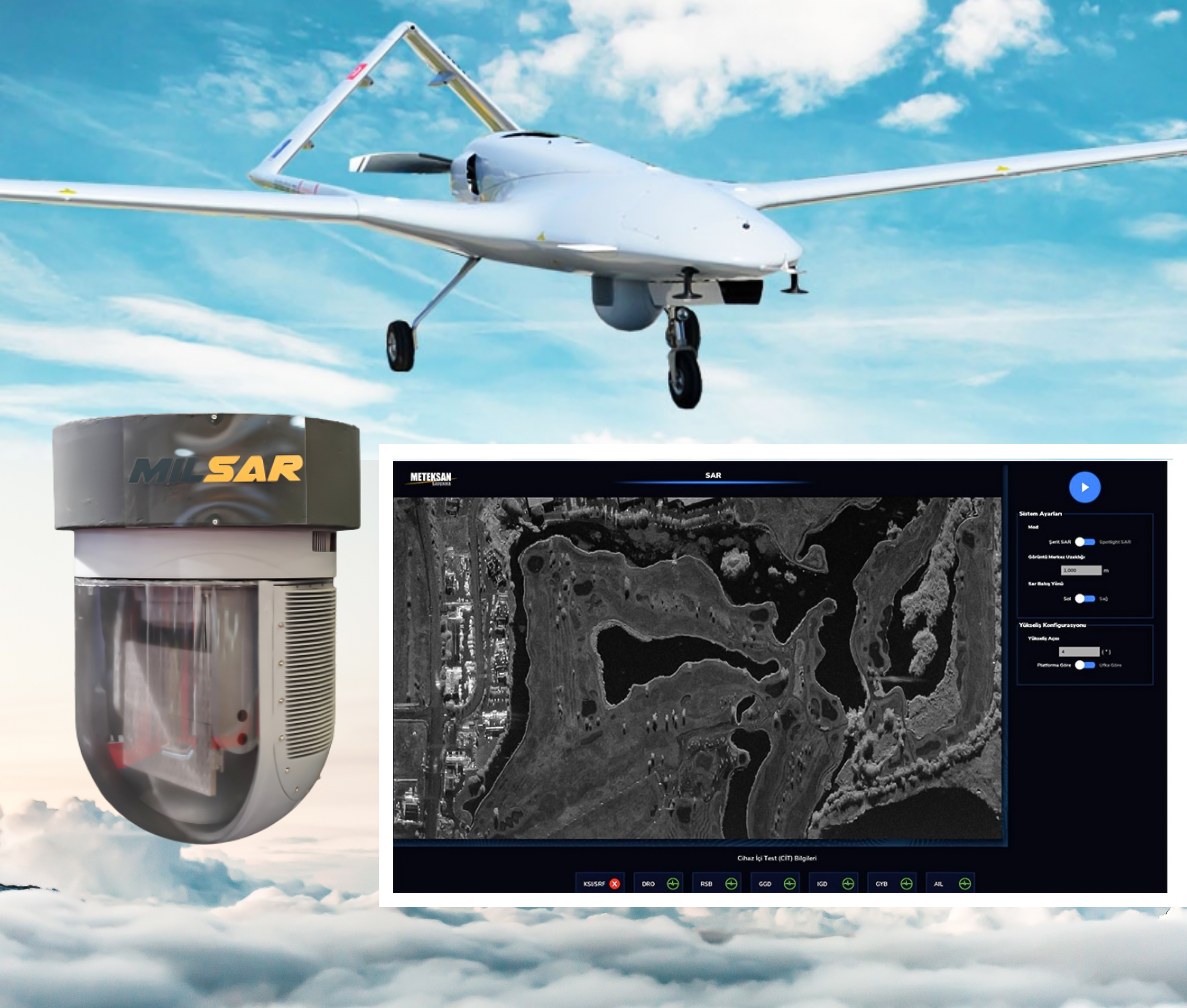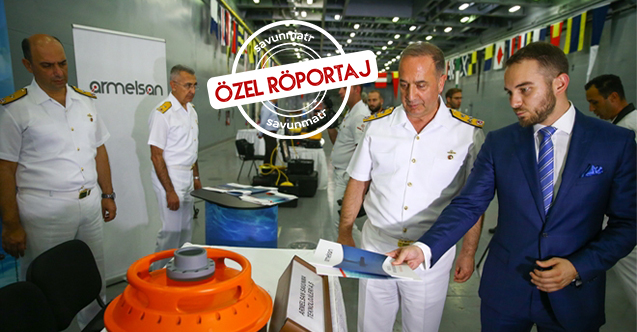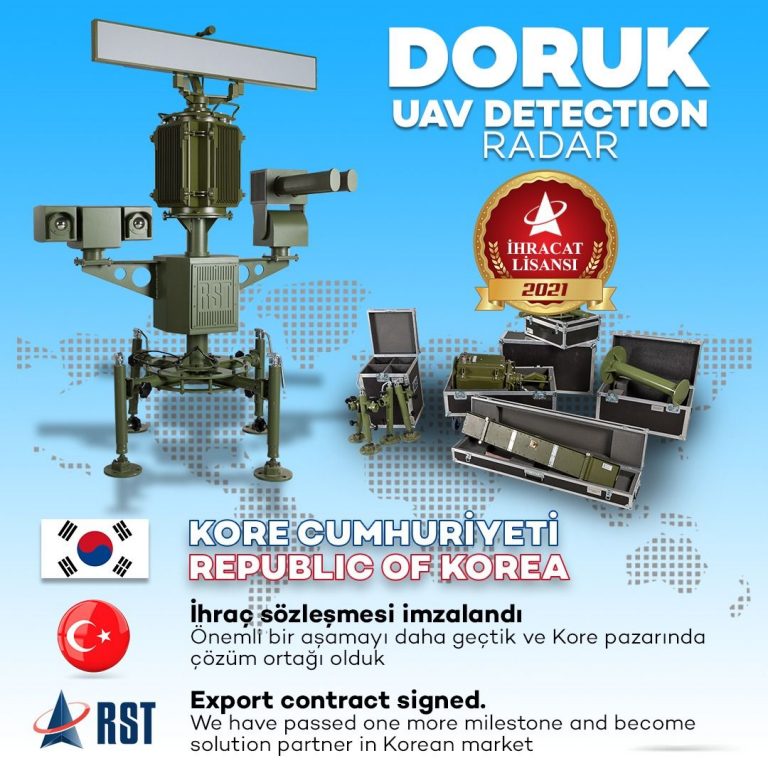i also thought the whole reason to use open one is to make it possible for fast reflex fire, also able to shoot with both eyes open mean see the whole area nearby and able to switch to next target... i guess its about if its city fight or open area like forest or something like thatI would rather ask about the disadvantages. They are mostly the same to the user but with the closed tube you get less field of view, maybe slightly more parallax which is critical for long range precision shots and more tunnel vision which is bad for CQB as the soldier have to work with his peripheral vision a lot. Of course there are people who like them more but my personal preference would go to the open style reflex sight. It is good that we have the capability to produce both.
You are using an out of date browser. It may not display this or other websites correctly.
You should upgrade or use an alternative browser.
You should upgrade or use an alternative browser.
@Defence Turkey

Meteksan Defence MILSAR SAR/GMTI Radar Provides Outstanding Capabilities to Tactical UAVs
MILSAR generate radar images up to 30cm resolution from 27km.
Meteksan Defence product MILSAR SAR/GMTI Radar, which was exhibited for the first time at IDEF ‘19 Fair, is designed to incorporate the features of the best products in its segment (I-MASTER and similar).
MILSAR, which is a multi-functional radar system with SAR and GMTI Modes, initially had different technical specifications (Ka-Band and 10km range). However, after a new system with upper segment SAR/GMTI radar features was requested by both the SSB and other UAV platform manufacturers, including Baykar Defence, Meteksan Defence made significant improvements in the MILSAR's SAR/GMTI Radar feature set under a contract amendment. After a change in the contract, the frequency range of MILSAR was changed (Ku-Band), its range was increased (27km), resulting in a product that is lighter than its competitors. According to the information we received, MILSAR, which is stated to have similar performance characteristics to equivalent products despite its lightweight, can generate radar images up to 30cm resolution from 27km. Having the same mechanical interface as the standard 15-inch EO/IR FLIR turret (in this way, MILSAR can be installed instead of EO/IR payload when necessary), MILSAR provides Tactical UAVs with 360-degree scanning and surveillance capability regardless of weather conditions.
MILSAR can operate in Strip or Spot Modes like other SAR systems and can produce images at 1m resolution in Strip Mode and display them to the operator in near real-time. The bandwidth required for transferring images to the Ground Control Stations (GCS) and headquarters is compatible with existing UAV data links, TSKNet, and TAFICS infrastructures. During an operation, a significant portion of the bandwidth remains available to transmit other flight and mission data while SAR/GMTI data is transferred. Furthermore, Meteksan Defence also offers its newly developed C-Band Data Link as a solution considering the future developments in Unmanned Aerial Vehicle subsystems. With the C-Band Data Link, which can share data up to 13Mb per second at a range of over 200km and provides reliable communication with its frequency hopping/spread spectrum feature (FHSS&DSSS), the bandwidth that can be allocated for this task can be increased even further.
Read More:

Meteksan Defence MILSAR SAR/GMTI Radar Provides Outstanding Capabilities to Tactical UAVs
MILSAR generate radar images up to 30cm resolution from 27km.
 www.defenceturkey.com
www.defenceturkey.com
i think, as TB2 could see targets from 27km away, the anti tank missiles will become bigger to go to that far, which will make it hard for TB2 to carry them... thats why Turkey recently developed a system that TB2 will show the target and Atak (which can be loaded with heavier missiles) can shoot those targets. thinking that Current missiles able to go 8km, 27km missiles might be way bigger especially when they are sent from train hugging helicopters that fly low... but it will be super danger for even super high level air deffense missiles...@Defence Turkey

Meteksan Defence MILSAR SAR/GMTI Radar Provides Outstanding Capabilities to Tactical UAVs
MILSAR generate radar images up to 30cm resolution from 27km.
Meteksan Defence product MILSAR SAR/GMTI Radar, which was exhibited for the first time at IDEF ‘19 Fair, is designed to incorporate the features of the best products in its segment (I-MASTER and similar).
MILSAR, which is a multi-functional radar system with SAR and GMTI Modes, initially had different technical specifications (Ka-Band and 10km range). However, after a new system with upper segment SAR/GMTI radar features was requested by both the SSB and other UAV platform manufacturers, including Baykar Defence, Meteksan Defence made significant improvements in the MILSAR's SAR/GMTI Radar feature set under a contract amendment. After a change in the contract, the frequency range of MILSAR was changed (Ku-Band), its range was increased (27km), resulting in a product that is lighter than its competitors. According to the information we received, MILSAR, which is stated to have similar performance characteristics to equivalent products despite its lightweight, can generate radar images up to 30cm resolution from 27km. Having the same mechanical interface as the standard 15-inch EO/IR FLIR turret (in this way, MILSAR can be installed instead of EO/IR payload when necessary), MILSAR provides Tactical UAVs with 360-degree scanning and surveillance capability regardless of weather conditions.
MILSAR can operate in Strip or Spot Modes like other SAR systems and can produce images at 1m resolution in Strip Mode and display them to the operator in near real-time. The bandwidth required for transferring images to the Ground Control Stations (GCS) and headquarters is compatible with existing UAV data links, TSKNet, and TAFICS infrastructures. During an operation, a significant portion of the bandwidth remains available to transmit other flight and mission data while SAR/GMTI data is transferred. Furthermore, Meteksan Defence also offers its newly developed C-Band Data Link as a solution considering the future developments in Unmanned Aerial Vehicle subsystems. With the C-Band Data Link, which can share data up to 13Mb per second at a range of over 200km and provides reliable communication with its frequency hopping/spread spectrum feature (FHSS&DSSS), the bandwidth that can be allocated for this task can be increased even further.
Read More:

Meteksan Defence MILSAR SAR/GMTI Radar Provides Outstanding Capabilities to Tactical UAVs
MILSAR generate radar images up to 30cm resolution from 27km.www.defenceturkey.com
yakusha
Active member
SAR / GMT Radar Capabilities Turkey (Turkish)

 www.linkedin.com
www.linkedin.com
Top Content on LinkedIn
Explore top LinkedIn content from members on a range of professional topics.
SAR / GMT Radar Capabilities Turkey (Turkish)

Top Content on LinkedIn
Explore top LinkedIn content from members on a range of professional topics.www.linkedin.com
According to our information, during a joint test with DzKK, the SARPER ™ SAR / GMTI-ISAR Radar on the S-2E / T Flying Test Platform was able to obtain a higher quality SAR image than the Ocean Master 400 Radar on the P-235 DKU.
The SARPER ™ ️ Radar is still used in the ANKA Block-B UAV System, which is in service with the DzKK and consists of three aircraft, and the 4th ANKA Block-B UAV is equipped with the SARPER + SAR / ISAR / Sea Search radar, the new version of the system with increased range. According to the press release published by TAI on August 24, 2020, the 4th ANKA Block-B UAV equipped with SARPER + Radar was delivered to DZKK in August.
yakusha
Active member
Armelsan Sonar Systems

 www.savunmatr.com
www.savunmatr.com
"Yine ASELSAN’ımız ile birlikte, denizaltı savunma harbi maksadı ile fırkateyn ve korvetlerimizde kullanılacak, derinliği değiştirilebilir çekilebilir düşük frekanslı aktif sonar geliştirilmesi projesini yürütmekteyiz ve bu projenin de tasarım aşamasının sonuna gelmiş bulunmaktayız."
"Again, together with our ASELSAN, we are carrying out the project of developing low-frequency active sonar with variable depth to be used in our frigates and corvettes for the purpose of submarine defense warfare and we have reached the end of the design phase of this project." (Google Translate)

Armelsan yüksek yerlilik oranıyla dikkat çekiyor
Armelsan Genel Müdürü Can Emre Bakım, SavunmaTR’ye Armelsan’a ve Armelsan’ın gelecek vizyonuna dair özel açıklamalarda bulundu.
"Yine ASELSAN’ımız ile birlikte, denizaltı savunma harbi maksadı ile fırkateyn ve korvetlerimizde kullanılacak, derinliği değiştirilebilir çekilebilir düşük frekanslı aktif sonar geliştirilmesi projesini yürütmekteyiz ve bu projenin de tasarım aşamasının sonuna gelmiş bulunmaktayız."
"Again, together with our ASELSAN, we are carrying out the project of developing low-frequency active sonar with variable depth to be used in our frigates and corvettes for the purpose of submarine defense warfare and we have reached the end of the design phase of this project." (Google Translate)
Last edited:
D
dBSPL
Guest

Turkish company RST signed a contract with the Republic of Korea for the export of UAV (Unmanned Aerial Vehicle) Detection Radar.
UAV Detection Radar is used for low altitude moving targets over land or sea.
While it performs detection and classification, it provides angle, range, Radar Cross Section, radial velocity, heading, width of Doppler Frequency Spectrum, target tracking over map information of targets.
 www.rstteknoloji.com.tr
www.rstteknoloji.com.tr
While it performs detection and classification, it provides angle, range, Radar Cross Section, radial velocity, heading, width of Doppler Frequency Spectrum, target tracking over map information of targets.
Precise and State of Art
It detects low RCS targets with remarkable range performance which is very important in today’s threat environment. It is powered by solid state transmitter and it is drived by user friendly open architecture software.Mobile & Flexible
With it is unique design, it can be located anywhere easily. It can be integrated to car, track, trailer etc. easily. It supports Industry-standard communication interface.Robust and Reliable
With high MTBF and low MTTR, it is autonomous system to operate under all-weather and day and night conditions.Basic Functions
- Low altitude moving target detevtion over land and sea.
- Detection classification
- Angle, range, Radar Cross Section, radial velocity, heading, width of Doppler Frequency Spectrum
- Target tracking over map
- Track While Scan capability
| Clutter Supression | ≥ 45 dB |
| Weight | ≤ 75 kg |
| Dimensions | 120 x 500 x 750 mm |
| Operational Readiness | ≤ 10 dakika |
| Operating Temperature | -40 - +60 °C |
| Storage Temperature | -50 - +70 °C |
| MTBF | 5000 hour |
Technical Specifications
Operating Frequency Band
X BantDetection (%80 Pd and 10-6 Pfa)
- Human: > 15 km
- Big vehicle: >28 km
- UAV (RKA=0,01 m2): >6 km
- Helicopter: >25 km
- Velocity Detection 0,2 – 100 m/s
- Elevation Beamwidth 20°
Accuracy
| Azimuth | ≤ 1° (RMS) |
| Range | ≤ 5 m |
| Velocity | ≤ 0,2 m/s |
Resolution
| Azimuth | ≤ 2° |
| Range | ≤ 15 m |
| Azimuth Coverage | 360º |
| Scanning Rate | 90°/san |
| Target Detection | +200 while TWS |
Doruk: UAV Detection Radar - RST
Retinar PTR Perimeter Surveillance Radars
Combat-Master
Baklava Consumer
TEPES - Telescopic periscope

Combat-Master
Baklava Consumer
TCG Anadolu, Istanbul Class Frigates and Barbaros Class Frigates to have Piri Infrared search and track integrated

TCG Anadolu, Istanbul Class Frigates and Barbaros Class Frigates to have Piri Infrared search and track integrated
View attachment 14794
Is ther a project like this for the TFX?
Combat-Master
Baklava Consumer
Is ther a project like this for the TFX?
There isn't much information on what sort sensors will go into TFX. From images, mockups and models - we can only see a forward facing IRST. So singular IRST and not distributed, this may change however - so lets wait and see..
A
adenl
Guest
Aren't they doing it atm?I wish Turkey had invested in developing high quality image sensors.
Have to check the Aselsan magazine again, but can’t remember visible or IR light sensors aimed at high quality, i.e. To compete against bigger players like Sony etc...Aren't they doing it atm?
edit: maybe “high end” is a better term, might not be feasable for Turkey, for now.
Last edited:







